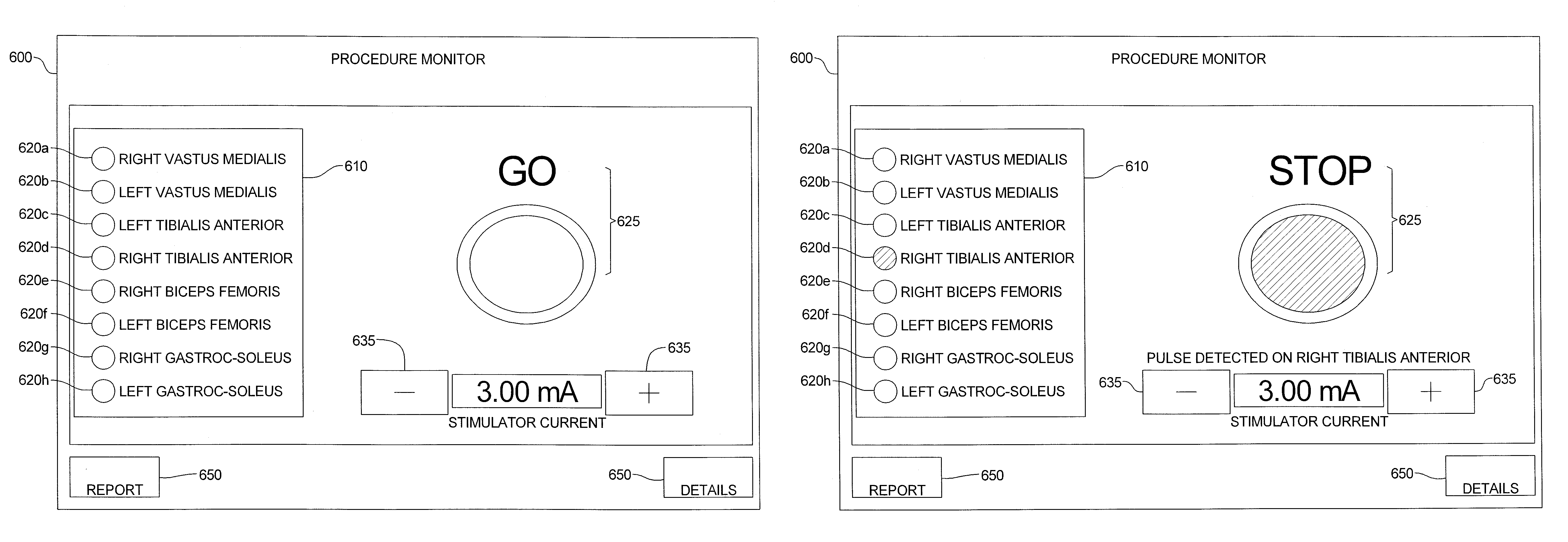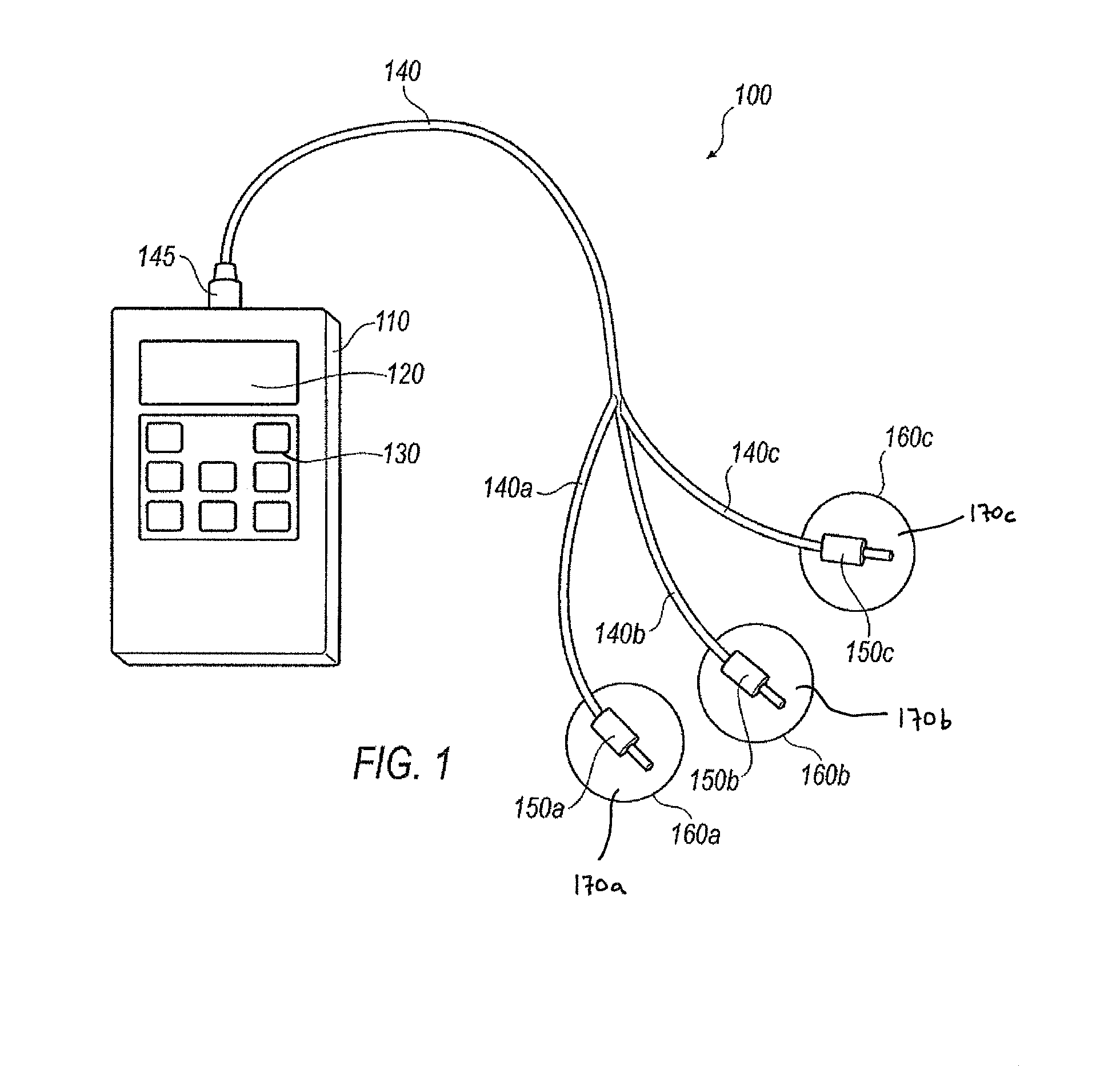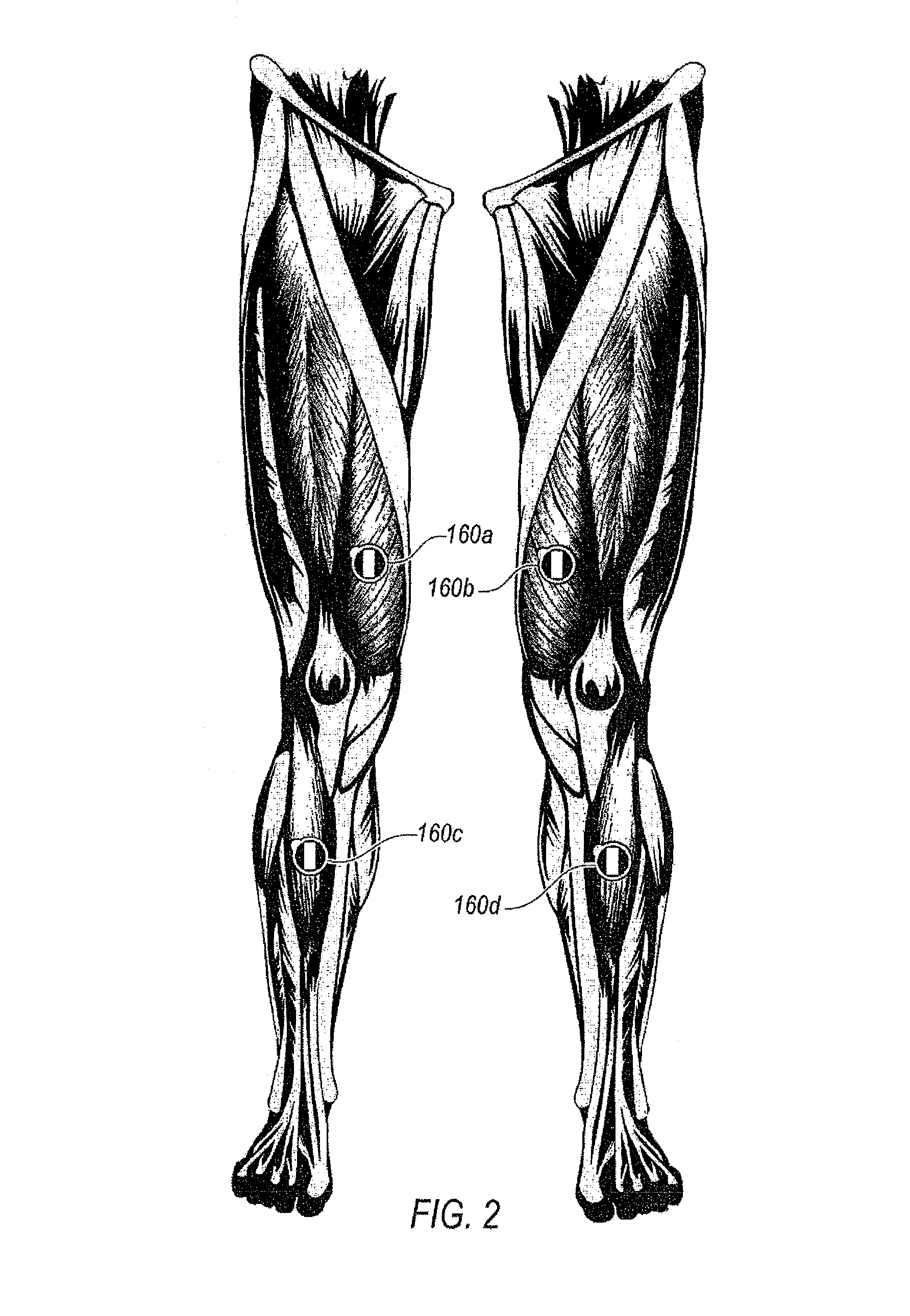Minimally invasive nerve monitoring device and method
a nerve monitoring and minimally invasive technology, applied in the field of minimally invasive nerve monitoring devices and methods, can solve the problems of large amount of blood and other fluids, major risk of nerve injury, and impracticality of certain procedures
- Summary
- Abstract
- Description
- Claims
- Application Information
AI Technical Summary
Benefits of technology
Problems solved by technology
Method used
Image
Examples
Embodiment Construction
[0031]FIG. 1 illustrates an exemplary nerve monitoring device 100, including at least one mechanical sensor 160 in communication with a receiver 110 over a connector such as cable 140. In the illustrated approach, receiver 110 includes a display screen 120, and a user interface including a plurality of buttons 130. In one exemplary approach, a receiver, such as receiver 110, may include a touch screen which may provide information to a user and may also act as a user interface capable of receiving input from a user. Receiver 110 may also include one or more icons, light emitting diodes (LEDs), audible indicators, or other devices configured to provide information to a user. The illustrated cable 140 includes a primary connector 150 connected to receiver 110, and a plurality of secondary connectors 155 removably connected to a plurality of mechanical sensors 160.
[0032]The receiver 110 may be a stand alone receiver, as illustrated. It is to be understood, however, that this is by way ...
PUM
 Login to View More
Login to View More Abstract
Description
Claims
Application Information
 Login to View More
Login to View More - R&D
- Intellectual Property
- Life Sciences
- Materials
- Tech Scout
- Unparalleled Data Quality
- Higher Quality Content
- 60% Fewer Hallucinations
Browse by: Latest US Patents, China's latest patents, Technical Efficacy Thesaurus, Application Domain, Technology Topic, Popular Technical Reports.
© 2025 PatSnap. All rights reserved.Legal|Privacy policy|Modern Slavery Act Transparency Statement|Sitemap|About US| Contact US: help@patsnap.com



